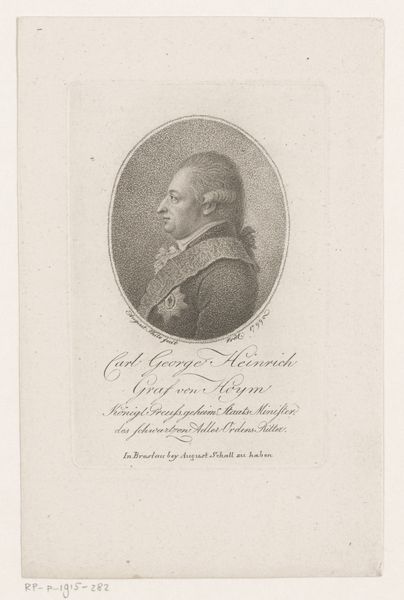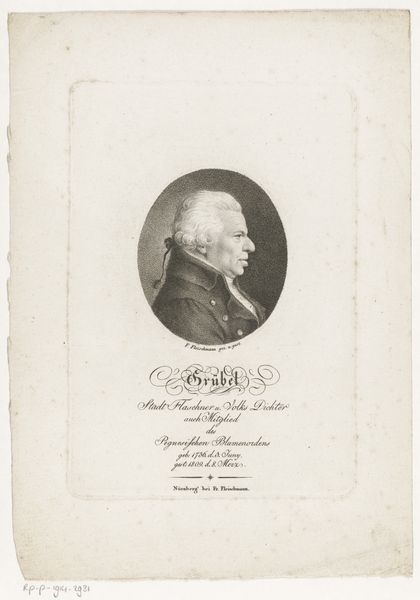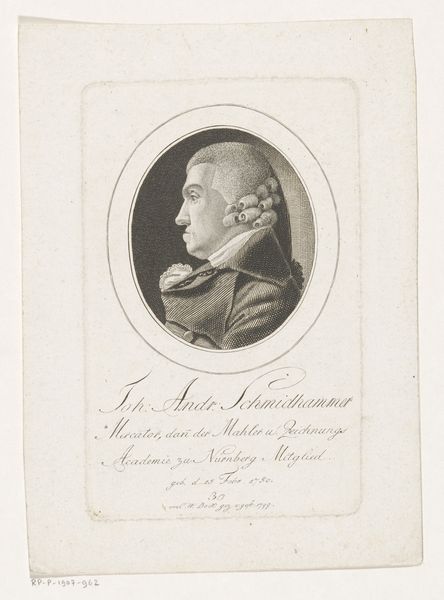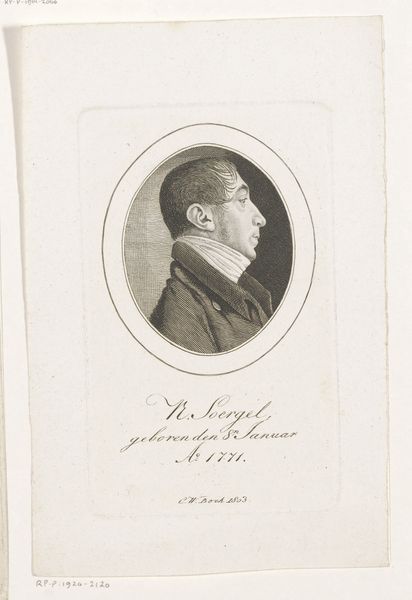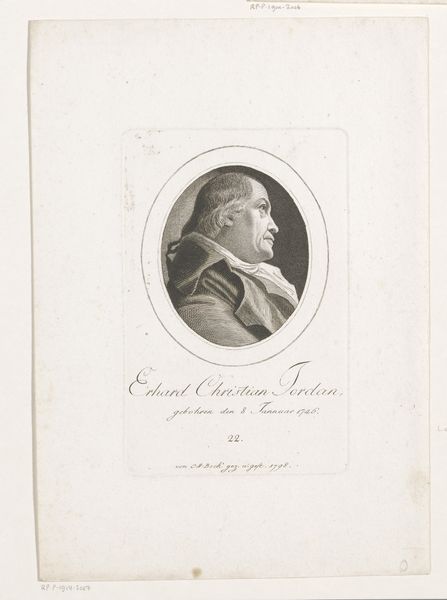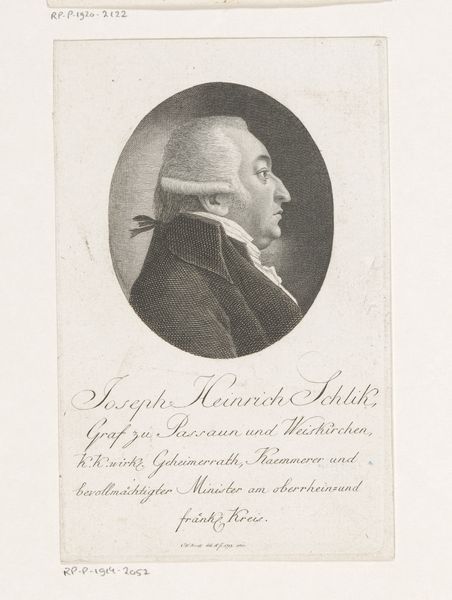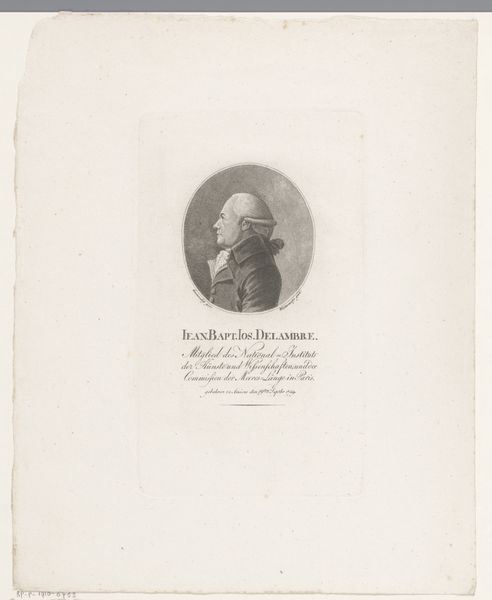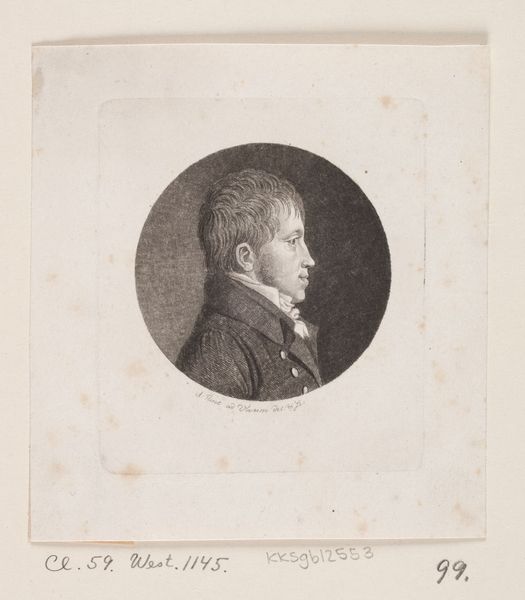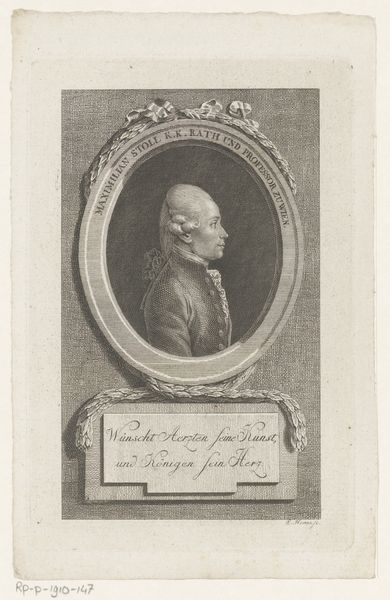
drawing, print, paper, engraving
#
portrait
#
drawing
#
neoclacissism
# print
#
paper
#
pencil drawing
#
line
#
engraving
Dimensions: height 167 mm, width 111 mm
Copyright: Rijks Museum: Open Domain
Curator: Looking at this print, the subject gazes towards an unseen horizon. It has a distinctly classical profile. Editor: It’s clean, austere even. A study in lines and light. Are we looking at a particular moment in history? Curator: Indeed. This is an engraving from 1801 titled "Portret van Carl Heinrich Heydenreich" by Johann Friedrich Bolt, currently held in the Rijksmuseum collection. Heydenreich was, according to the inscription below the portrait, a Professor of Philosophy in Leipzig. The work clearly belongs to the Neoclassical style. Editor: Neoclassical certainly, evoking ideals of order and reason, especially in the wake of the Enlightenment and revolutions swirling around the turn of the century. The figure is almost framed like a coin or medallion; his identity almost feels symbolic, not quite a true likeness. Curator: The oval border strengthens the symbolism. Profiles themselves are timeless. This almost removes the particular from the portrait to speak more broadly to the character of an academic, or perhaps, leadership. There’s a directness to his gaze despite it being in profile, as if observing a truth to share. Editor: Yes, there’s that quality, that ‘truth-telling’ pose struck to convey not just likeness, but also virtue. Was Heydenreich a significant figure, or a well-respected philosopher in his local sphere? Who would want this portrait in their possession? Curator: Exactly the questions social history raises! And I think those circles – fellow academics, family – were very much the intended audience for prints like these. It commemorated achievement and circulated intellectual status, fixing Heydenreich's image within that societal stratum. Editor: These works often operated as a social currency in that period. But also, what does it communicate today? The image's stark lines evoke the intellectual intensity attributed to that era. Almost clinical now, and drained of personal warmth by its commitment to pure form. Curator: Perhaps that very coldness is the lasting emblem – a focus on reason so total it could seem almost dehumanizing when stripped of context, while still conveying the powerful symbolism. Editor: Precisely. A visual embodiment of an era's hopes, achievements, and perhaps even, its potential shortcomings. Thanks for shedding light on its history.
Comments
No comments
Be the first to comment and join the conversation on the ultimate creative platform.
